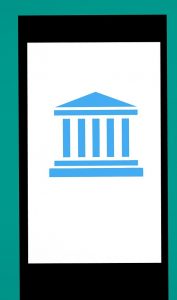
If you’ve been watching the news lately you will certainly have noticed that the Australian Banking Royal Commission has revealed a number of ‘less than desirable’ practices that have been used by our banks.
What you may not have known though is that over the last couple of years, with the threat of a royal commission over their heads, the banks have been cleaning up some of these practices.
Dodgy Figures
One such practice they had been engaging in is allowing inaccurate averaged figures to be used on loan applications. They were using a system based on standardised numbers. E.g. if a loan application came from a family with Mum, Dad and two kids, the banks would use a generic figure to represent the cost of living for a family of that size.
The application would be processed based on that generic figure, however it would have been a very rare occasion when that figure accurately represented the actual cost of living for that family.
So the banks have had to start using more realistic ‘cost of living’ figures when processing loan applications. Of course, this has meant they get to write less loans so it hurts their bottom line.
Hold that thought…
Budgeting Apps
You may have noticed that many of the banks have now produced apps for their customers to use.
While they all serve the same basic functions some now allow you to identify what your transactions were for; e.g. food, fuel, phone, entertainment, cigarettes, alcohol, electricity, gambling, childcare, movies… everything is there for you to identify and categorise. These apps then present you with a summary of your expenses in a fancy format supposedly designed to help you better track and manage your spending.
Seems like it could be a wonderful tool to help you become aware of what you are doing with your money doesn’t it?
Big Brother is Watching
However, don’t think this information is entirely for your benefit. If you are using one of these apps and you apply for a loan with the bank whose app you are using, you can be sure they now know all about your spending habits since you started using the app.
Previously your bank could see deposits and withdrawals but they didn’t know exactly what those transactions were for. In using the tracking function in these apps you will be telling your bank exactly what they were for!
If you’ve been a big spender and not managing your money very carefully and you’ve decided it’s time to turn over a new leaf, you might be in for a rude shock.
Even if you go on a 6 month ‘savings binge’ to prove you actually do have the ability to manage your money responsibly, when you put in your application for a loan you will likely be disappointed to find that your identified spending history is going to cost you.
Now you’re going to have to forgive me for being somewhat cynical here, but I don’t really think these apps have necessarily been created and made available solely with your best interest at heart.
My Prediction
I predicted a couple of years ago that the changes relating to the privacy laws that meant we would be moving to a system like the one used in the USA (where everybody has a credit score), was not in our best interest.
In the USA your credit score determines the interest rate you pay on a loan.
What I predicted is already starting to happen. (Click Here to see what I had to say).
My prediction going forwards is that before too long, Australian banks are going to say to potential borrowers “We’ve got all your spending history on file and we know all about you. You can’t fool us by saving for a few months. We know you represent a bigger risk”. “Yes, you can have the loan…. we’re so sorry though, you’re going to have to pay a higher interest rate because of your Credit Score and spending history”.
Penalty Interest rates
The system we did have in Australia before these changes came in, meant that when you applied for a loan, a check was made to see if you had defaulted on any payments. If you had no defaults and your expenses and income met the criteria, you were fine to get the loan. Everyone paid the same interest rate. You either got the loan or you didn’t.
Before too long though, you could be charged a higher ‘penalty’ interest rate even if you’ve never missed a payment, and the frustrating thing about that is that you may have inadvertently given the bank all your spending history which they then used to justify penalising you.
We’ve gone from a situation where banks were using ‘fluffy’ figures to lend to anyone and everyone, to potentially going to a system where your real figures will be used to justify making you pay more.
Either way the banks are the winners!
Looking Backwards vs Looking Forwards
Here’s the crazy thing about all this…. As the founder of the Spending Planners Institute I need to tell you that an app that looks at your historical transactions is never going to help you change financial direction anyway. It’s looking backwards at a financial history that you most likely would not want to repeat, but you can’t change it!
What you really need to set you free of money stress is a Spending Plan that looks forwards and gives you a road map to follow for the transactions that haven’t happened yet, so you can achieve the financial future you do want. Go to www.findaspendingplanner.
Comparing a Budgeting App with a Spending Plan is like comparing driving down the road looking in the rear-view mirror, with looking forwards through the windscreen. Looking backwards will never get you to where you want to go!
So, think twice before you go giving information about your spending habits to any app. It just might not be in your best interest.
